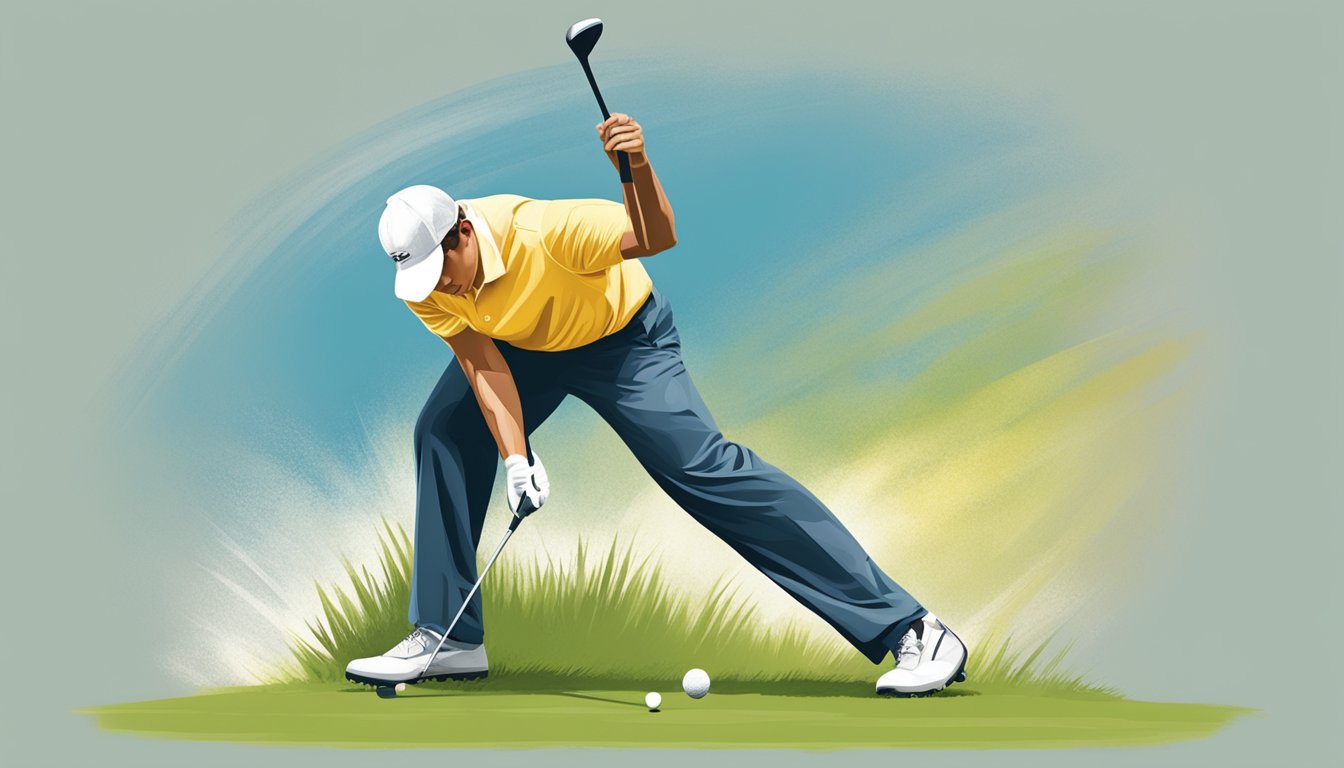If you’re a golf enthusiast, you may have heard of the term “superseded golf” before. But what does it really mean? Simply put, superseded golf refers to the use of outdated or replaced golf clubs and equipment by golfers. In some cases, professional golfers continue using certain superseded clubs due to personal preference or a belief that the older equipment performs better for their specific swing or game.
While the use of superseded golf equipment may seem like a disadvantage, many golfers find that it adds an extra level of challenge and excitement to the game. In fact, some golfers even prefer using older equipment because it requires a greater level of skill and precision. However, it’s important to note that the use of superseded golf equipment may not be allowed in certain tournaments or competitions, so it’s always best to check the rules and regulations beforehand.
Key Takeaways
- Superseded golf refers to the use of outdated or replaced golf clubs and equipment by golfers.
- Many golfers find that using superseded equipment adds an extra level of challenge and excitement to the game.
- The use of superseded golf equipment may not be allowed in certain tournaments or competitions, so it’s always best to check the rules and regulations beforehand.
Understanding Superseded Golf
As a golfer, you may have heard the term “superseded golf” and wondered what it means. Superseded golf refers to the use of outdated or replaced golf clubs and equipment by golfers. In some cases, professional golfers continue using certain superseded clubs due to personal preference or a belief that the older equipment performs better for their specific swing or game.
The rules of golf are set by two organizations, the United States Golf Association (USGA) and The R&A. These organizations have strict guidelines on what equipment can be used during a game of golf. The USGA and The R&A regularly update these guidelines to ensure that the game remains fair and competitive.
When a piece of golf equipment is deemed superseded, it means that it no longer meets the current guidelines set by the USGA and The R&A. This can be due to a variety of reasons, such as changes in technology or materials used in manufacturing. Golfers are not allowed to use superseded equipment during official tournaments or competitions.
It is important to note that just because a piece of equipment is superseded does not mean it is obsolete or unusable. Golfers can still use superseded equipment for recreational play or practice. However, if you plan on playing in official tournaments or competitions, you must ensure that your equipment meets the current guidelines set by the USGA and The R&A.
In conclusion, superseded golf refers to the use of outdated or replaced golf clubs and equipment by golfers. The USGA and The R&A regularly update their guidelines on what equipment can be used during a game of golf to ensure that the game remains fair and competitive. If you plan on playing in official tournaments or competitions, it is important to ensure that your equipment meets the current guidelines set by these organizations.
The Role of Equipment
https://www.youtube.com/watch?v=GMXFC-bfu-s&embed=true
When it comes to playing golf, the equipment you use can have a significant impact on your game. The two most important pieces of equipment are your golf clubs and golf balls. In this section, we will discuss the role of equipment in golf and how it affects your game.
Golf Clubs
Golf clubs are the most important piece of equipment in your bag. They are used to hit the ball and come in various shapes and sizes. The most common types of clubs include drivers, irons, wedges, and putters.
The driver is the longest club in your bag and is used to hit the ball the farthest. It is designed to hit the ball off the tee and is often used on par 4 and par 5 holes. Irons are used for shorter shots and are designed to hit the ball higher and with more accuracy. Wedges are used for short approach shots and are designed to hit the ball high and stop it quickly on the green. Putters are used on the green to roll the ball into the hole.
The type of club you use can have a significant impact on your game. For example, using a driver with a larger clubhead can help you hit the ball farther, while using a putter with a larger sweet spot can help you make more putts.
Golf Balls
Golf balls are another important piece of equipment in your bag. They come in various sizes and designs and are designed to fly through the air and roll on the green. The most common types of golf balls include two-piece, three-piece, and four-piece balls.
Two-piece balls are the most common type of golf ball and are designed for distance. They have a large core and a hard outer layer that helps them fly through the air. Three-piece balls are designed for more control and have a softer outer layer that helps them stop quickly on the green. Four-piece balls are designed for maximum control and have multiple layers that help them spin and stop quickly on the green.
The type of golf ball you use can also have a significant impact on your game. For example, using a softer ball can help you spin the ball more, while using a harder ball can help you hit the ball farther.
In conclusion, the equipment you use in golf can have a significant impact on your game. By understanding the role of equipment, you can choose the right clubs and balls to help you play your best.
Techniques in Superseded Golf
Superseded golf is a game that involves the use of outdated or replaced golf clubs and equipment. In superseded golf, certain clubs and equipment may be used due to personal preference or a belief that the older equipment performs better for a specific swing or game. In this section, we will discuss some of the techniques used in superseded golf.
Swing Techniques
In superseded golf, swing techniques play a vital role in the game. Your swing technique can affect your distance, impact, and lie. It is essential to maintain a consistent swing speed, grip strength, and control to achieve a better result. When playing with superseded equipment, you may need to adjust your swing technique to achieve the desired result.
Strategy and Planning
Superseded golf requires a different strategy and planning compared to regular golf. Your caddie can play a vital role in helping you plan your shots and choose the right club. When playing with superseded equipment, you may need to adjust your strategy to match the limitations of the equipment. For example, if you are using a red club, you may need to adjust your strategy to compensate for its limitations.
In conclusion, superseded golf is a game that requires a different approach compared to regular golf. Your swing technique, strategy, and planning can affect your performance. By adjusting your technique and strategy, you can achieve better results when playing with superseded equipment.

Training for Superseded Golf
« Best Cobra Hybrids: A Guide to the Top Picks for Your Golf Bag
9 Simple Golf Tips to Lower Your Scores Dramatically »
https://www.youtube.com/watch?v=9DGv0KK7_Xw&embed=true
If you want to improve your superseded golf game, training is key. There are several training methods and routines you can use to enhance your swing and overall performance.
Strength Training
Strength training is an essential part of any golf training routine. By building strength in your muscles, you can improve your swing speed and power. You can use weights or resistance bands to target specific muscle groups that are important for golf, such as your core, legs, and shoulders.
Superspeed Squeeze
Superspeed Squeeze is a training tool that can help you improve your swing speed and power. It is a hand-held device that you squeeze, which helps to strengthen your grip and wrist muscles. This can translate into a more powerful swing, as well as greater control over the clubface.
Training Routine
A good training routine should include a mix of strength training, flexibility exercises, and swing drills. You should aim to train at least three times a week, but no more than six times a week. It’s important to give your body time to rest and recover between sessions.

Training Protocol
There are several training protocols you can follow to improve your superseded golf game. For example, the SuperSpeed Golf training protocol involves using three different weighted clubs to perform a series of swings. The protocol includes a warm-up, three sets of swings with each club, and a cool-down. You can find more information about the SuperSpeed Golf training protocol here.
By incorporating these training methods and routines into your superseded golf practice, you can improve your swing speed, power, and overall performance on the course.
Superseded Golf in Professional and Amateur Circles
Superseded golf is a term used to describe the use of outdated or replaced golf clubs and equipment by golfers. It is not uncommon for professional golfers to continue using certain superseded clubs due to personal preference or a belief that the older equipment performs better for their specific swing or game. For example, Tiger Woods was known to use a Nike VR Tour driver that was released in 2009, despite newer models being available.
In amateur circles, superseded golf can occur when players use equipment that no longer conforms to the rules of golf. The United States Golf Association (USGA) and the R&A, the two governing bodies of golf, regularly update the rules to ensure that the game remains fair and consistent. In 2022, the USGA and R&A introduced new rules of amateur status that modified or changed many of the previous restrictions that applied to a golfer’s amateur status.

In some cases, superseded golf can lead to controversy. For example, in 2021, a Utah high school golfer was disqualified from a state tournament for using a non-conforming driver. The driver was only slightly non-conforming, but it still violated the rules of golf. The incident sparked a debate about the use of superseded equipment in amateur golf and whether the rules should be more lenient.
Superseded golf can also have an impact on team competitions such as the Ryder Cup. In the past, some players have been known to switch to older equipment in order to gain an advantage. However, this practice has become less common in recent years as the technology of golf equipment has improved.
Overall, superseded golf is a topic that is relevant to both professional and amateur golfers. While some golfers prefer to stick with older equipment, others choose to embrace the latest technology. Regardless of your preference, it is important to ensure that your equipment conforms to the rules of golf and is in good condition.
Frequently Asked Questions
How can I improve my golf swing speed?
Improving your golf swing speed requires consistent training and practice. One effective way to do this is by using speed sticks, which are designed to help you increase your swing speed over time. SuperSpeed Golf offers a comprehensive training program that includes speed sticks and other training aids to help you improve your swing speed.
What is the SuperSpeed Golf protocol?
The SuperSpeed Golf protocol is a training program that is designed to help golfers of all skill levels improve their swing speed and overall performance on the course. The program includes a series of exercises and drills that are designed to help you increase your swing speed over time.
What are the benefits of using speed sticks in golf?
Speed sticks are a great way to improve your golf swing speed and overall performance on the course. By using speed sticks regularly, you can increase your swing speed, improve your ball speed, and hit the ball farther and more accurately.
How does SuperSpeed Golf compare to the Stack System?
SuperSpeed Golf and the Stack System are both training programs that are designed to help golfers improve their swing speed and overall performance on the course. However, SuperSpeed Golf is generally considered to be more comprehensive and effective than the Stack System.
What is the best way to train for golf speed?
The best way to train for golf speed is to use a comprehensive training program that includes speed sticks, exercises, and drills designed to help you increase your swing speed over time. SuperSpeed Golf offers one of the most effective and comprehensive training programs available on the market today.
Where can I find SuperSpeed Golf products in the UK?
SuperSpeed Golf products are available for purchase online and at select golf retailers in the UK. You can also visit the SuperSpeed Golf website to find a list of authorized dealers and retailers in the UK.













